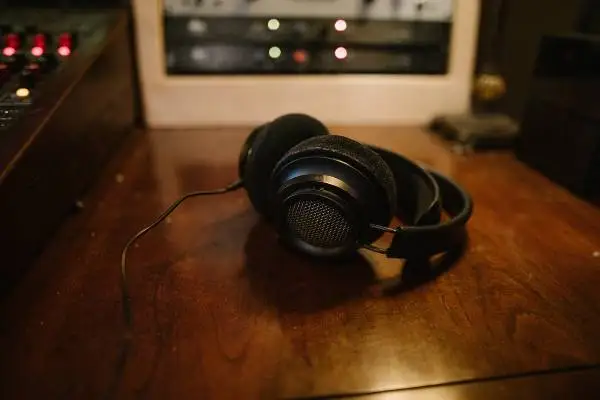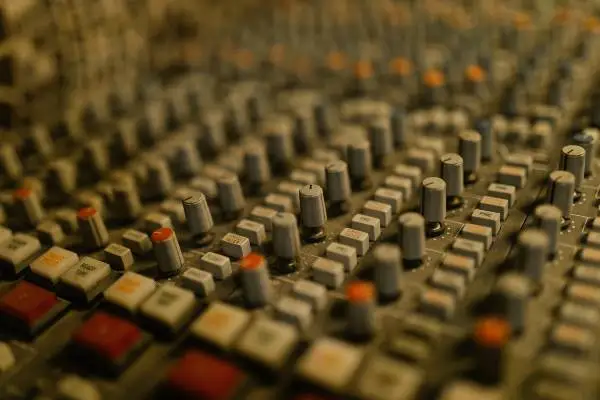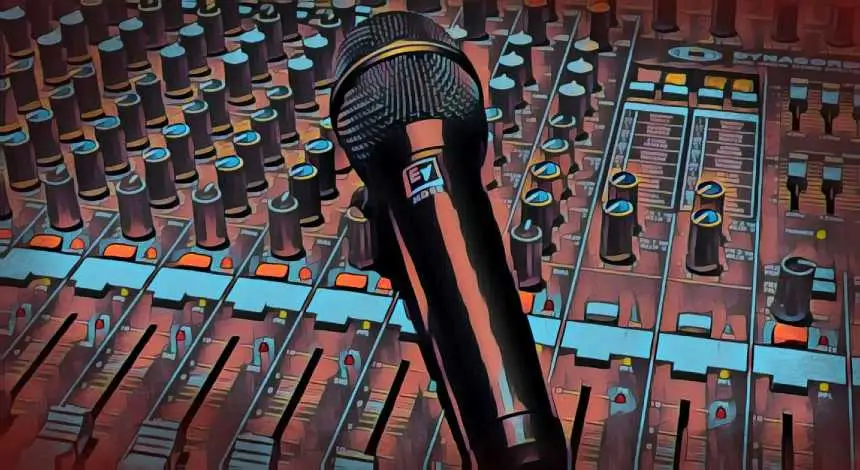Panning music is one of the best ways to take your music from an enjoyable experience to an immersive one. Extending your music across the stereo spectrum isn't just great for your listener, it can also create needed space in your mix , allowing your tracks to shine in the way you intended.
That being said, there is such thing as right and wrong when it comes to learning how to pan instruments and other sounds in music production. We've put together a comprehensive guide on all things panning.
Below, we'll discuss what panning is and how you can mix music across the left and right stereo channels. We'll also share some songs with different panning techniques so that you can hear examples to inform your future tracks. Let's jump into it!

What Is Panning In Music?
Generally speaking, panning refers to taking a stereo or mono track and distributing it throughout the left and right channels of a stereo field. You're able to control a track's position within a stereo image using an audio pan pot or a slider for pan control.
Panning allows producers and musicians to produce a wider sonic experience, which also opens up mixing and sonic possibilities with different pan positions. Most studio tracks today use some sort of panning, but you can also find panning examples in older music as discussed below.
Examples of Panning In Music
Here are a few of the best examples of panning in music. Be sure to listen to the difference between the sound of the left and right speakers on your playback device. You'll find that some instruments are more pronounced on one side over the other. This is a result of the pan control setting determined for each track in the following songs:
"Mr. Brightside" By The Killers
This iconic track opens with panning that may be a bit extreme for some listeners, though it's certainly a part of the song's all-consuming feel. First, you'll feel the guitar's central guitar lick on the extreme left side of the stereo pan, followed up by super-compressed drums coming in on the right speaker.
You'll notice that the panning position sounds different after the intro. The drums are switched center, and it feels as though the middle range of the song is filled out as opposed to hard panning. As this song exemplifies, panning automation alone can easily distinguish one section of a song from another, making it an essential tool for any music producer.
"Such Great Heights" By The Postal Service
This 2000's indie classic uses simple analog pan controls to create a compelling synth line that's more or less repetitive opening up the song. Most of the opening synth line stays panned center while occasional drops of synth escape to the left speaker and back to the right, creating interest.
"Yesterday" by The Beatles
You can find plenty of examples of extreme panning in 60s music, and the Beatles are no exception. The stereo image as we know it was an emerging technology at that point in time, so adding panning to the left and right buses allowed listeners to experience music in a whole new way. Today, the hard pan right then extreme left may seem a bit intense, but there's another reason why these recordings were this way outside of novelty:
Back then, the typical physical recording console only had three options: 1) L (left pan) 2) C (center pan) and 3) R (Right pan) or left center right for short. And so, lcr panning was born. The imaging technology has advanced since then, but plenty of listeners continue to enjoy the switched extreme from one channel to the other featured in older compositions.
What Is A Pan Pot?
A pan pot stands for panning potentiometer. It is a pan control that allows you to distribute mono sounds or stereo sounds between the left and right sides of the stereo field. Pan pots take the direct signal and split it to the left or right channel at equal volume. If a pan pot is set at 0, it is considered center so the sound is distributed equally between the left and right speakers.
The closer an audio panning is to zero, the less it is panned. So, the position indicator would tell you that at 50 to the left ear is harder panned than an instrument set at 13 which would only be panned slightly.
Where Should Different Instruments Be Panned In A Mix?
Just like any other music production technique, audio panning is entirely subjective. You are free to place mono and stereo instruments in any iteration you choose. That being said, it may be helpful to have a basic framework of where certain instruments lie.
Use this as a rough outline for right and left channel pan positions, but don't forget to experience! This model also assumes that your instruments panned left and right are balanced on either side, which isn't necessarily essential depending on the mix, so take this with a grain of salt.
Center Pan
Generally speaking, this is where you want to keep the body, or the most important or grounding parts of your song. This could be lead vocals, bass guitar, the central kick drum, and snare from the drum kit. Central sounds are the ones you want most audible to the listener. Other low-frequency sounds may be best placed in the center of a stereo mix.
Hard Left and Right
These are typically higher-pitched sounds that add shimmer to a mix without being overbearing in their own space. Typically, these are high-pitched sounds like a hi-hat, drum overheads, or atmospheric pad.
Somewhere In The Middle Of The Stereo Spectrum
These sounds add depth to your mix but are panned so that they don't detract from the limited real estate in the center of a mix. This could be electric guitars or a stereo piano track, background vocals, acoustic guitar. Typically, these are mid-range frequencies that help support the general idea of the stereo track.

How To Use Panning In Your Music
Without further ado, here are some ways you can implement panning instruments into your tracks. This moving image technology will undoubtedly enhance your songs, so be sure to try out some of these strategies on your next mix!
Identify Your Center
Sometimes, the best way to craft your panning strategy is to figure out which limited amount of sounds you want in the center of your mix. Figure out your focus: For example, maybe you want the bass guitar to take center stage in a particular section. You know that's the center, so fill in the rest of the pieces from there, taking care to fill out your right and left output levels while preventing too many sounds from building up in the same space.
Automate For A More Dynamic Mix
Don't forget to experiment with panning automation throughout your mix. It's a common theory that the chorus of a song should "open up" or feel wider. Perhaps you automate an incoming source channel to hard pan to the left or right once the chorus hits. Whatever it may be, don't skimp out on this automation opportunity.
Pay Attention To How EQ and Pan Interact With One Another
Sometimes, simply panning one sound to a different position can eliminate the need to EQ out a problematic frequency. Just be aware that EQ and panning controls interact with each other, so you'll need to keep their relationship in perspective while working through your mixes.
According to pan law, sounds behave differently depending on where they are placed within a stereo field. Pan laws are different for every DAW , but the main gist is that there are several ways to adjust a sound's position and that the type of movement may also affect the amplitude of the signal. Everything is interrelated, including panning.
Play With Different Panning Balances
It's common to pan one instrument, such as an acoustic guitar equal parts on the left as you would on the right. While this is a perfectly valid approach, don't forget to let yourself try different combinations! You never know what might work for any particular song, so work with as many different balances as possible.
Try Implementing Pan Restrictions
Sometimes, the most creative decisions can come out of restrictions. If you're having trouble figuring out pan positions, set your pan pots to specific values so that tracks can only be panned to 3-5 values as you would with lcr panning. This will undoubtedly make for some unique mix sounds and help you hear your audio in a whole new way.
Try To Visualize Your Sounds
Before moving the on-screen virtual knobs or your pan pot, try to visualize where you want each sound to be. This simple exercise can give you full gameplay so that you're not panning blindly. It's also a good idea to try and visualize the stereo field while listening to reference tracks. Notice where the bass, drums, acoustic guitar, vocals, etc. all lie, and take these insights back to your own work.
Give Your Ears a Rest and Test Your Mix
As with any mix, it can be helpful to take a break to prevent ear fatigue. Don't forget to give your mixes time to develop, and experiment with different panning positions as needed. It can also be helpful to test your mix in mono to create a cleaner pan. When in doubt, let your mix breathe and pick it up again when you have a fresh sonic perspective.
Panning allows producers to fill a defined space sonically, producing a better listening experience and endless production possibilities for all of us. Have fun utilizing this essential effect in your sessions.





